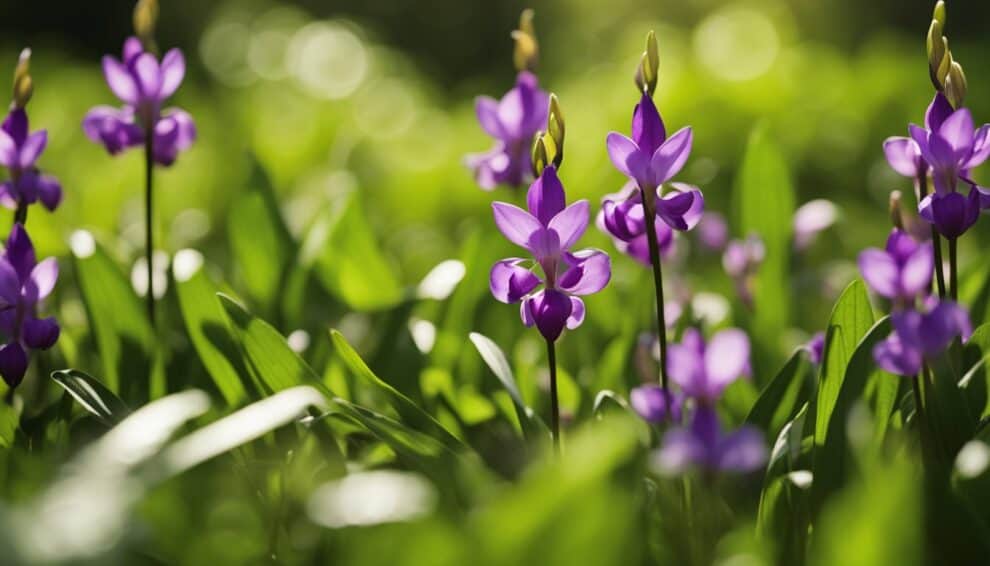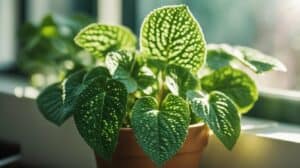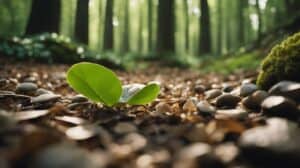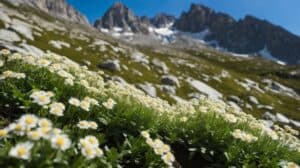Dodecatheon Meadia, commonly known as Shooting Star, is a stunning wildflower that blooms in early spring.
Its unique and eye-catching appearance makes it a popular choice for gardeners looking to add a touch of color to their landscape.
However, caring for this plant can be a bit tricky for beginners.
In this article, we will provide a comprehensive guide to Dodecatheon Meadia care and cultivation, so that even those with little gardening experience can successfully grow and enjoy this beautiful flower.

Native to North America, Dodecatheon Meadia is a hardy perennial that thrives in moist, well-drained soil and partial shade.
It typically blooms from March to May, producing clusters of pink or white flowers with distinctive reflexed petals that resemble shooting stars.
While this plant is relatively low-maintenance, it does require some specific care to ensure its health and longevity.
In the following paragraphs, we will explore the key steps to successfully growing and caring for Dodecatheon Meadia, from planting and watering to fertilizing and pruning.
Getting to Know Dodecatheon Meadia
Botanical Profile
Dodecatheon Meadia, commonly known as Shooting Star, is a herbaceous perennial plant that belongs to the Primrose family.
It grows up to 12-18 inches tall and has a spread of 6-12 inches. The plant has a basal rosette of lance-shaped leaves that are about 4-8 inches long.
The leaves are dark green in color and have a smooth texture.
The plant produces a tall, slender, and leafless stem that bears a cluster of pink or white flowers at the top.
Native Habitat and History
Shooting Star is native to North America and can be found growing in the wild in moist meadows, prairies, and open woods.
The plant has a long history of medicinal use by Native Americans, who used it to treat a variety of ailments such as coughs, colds, and headaches.
Today, Shooting Star is a popular ornamental plant that is grown in gardens and landscapes.
It is easy to grow and care for, making it a great choice for beginners.
With proper care and cultivation, Shooting Star can provide a stunning display of color in the spring garden.
Essential Care Guidelines

Soil Requirements
Dodecatheon meadia prefers well-draining soil that is rich in organic matter. A soil pH of 5.5 to 6.5 is ideal for optimal growth.
The plant does not tolerate heavy clay soils or waterlogged conditions. If the soil is heavy, amend with sand, peat moss, or perlite to improve drainage.
Watering Techniques
Dodecatheon meadia requires consistent moisture, but not waterlogged conditions.
Water the plant deeply once a week, or more frequently during hot, dry weather. Avoid overhead watering, which can cause leaf spot and other fungal diseases.
Instead, water at the base of the plant. Mulching around the plant can help retain moisture in the soil.
Sunlight and Temperature Needs
Dodecatheon meadia prefers partial to full sun. In hot climates, the plant benefits from afternoon shade.
The plant is hardy in USDA zones 3 to 8 and can tolerate temperatures down to -40°F (-40°C).
In warmer climates, the plant may go dormant during the summer months and re-emerge in the fall.
Remember to provide adequate care for your Dodecatheon meadia to ensure healthy growth and beautiful blooms.
Propagation and Planting

Seed Propagation
Dodecatheon Meadia can be easily propagated from seeds. The best time to sow the seeds is in late summer or early fall.
The seeds should be sown in a well-draining soil mix, and they should be covered with a thin layer of soil.
Water the soil regularly to keep it moist but not waterlogged.
The seeds should be kept in a cool and shaded area until they germinate. The germination process can take up to three weeks.
Once the seedlings are big enough to handle, they can be transplanted into individual pots or directly into the garden.
Division Method
Dodecatheon Meadia can also be propagated through division. The best time to divide the plants is in early spring before new growth appears.
Carefully dig up the plant and gently separate the clumps into smaller sections. Each section should have a good root system and a few leaves.
Replant the sections in a well-draining soil mix, making sure that the top of the root ball is level with the soil surface.
Water the soil thoroughly after planting.
It is important to note that Dodecatheon Meadia does not like to be disturbed, so it is best to avoid dividing the plants too often.
Common Challenges and Solutions

Pest Management
Dodecatheon Meadia is generally pest-free, but it can occasionally be affected by aphids, spider mites, and slugs.
These pests can cause damage to the plant’s foliage and flowers.
To prevent aphids and spider mites from infesting the plant, it is recommended to regularly spray the plant with a mixture of water and insecticidal soap.
This will help to control the population of these pests and prevent them from causing significant damage to the plant.
Slugs can be controlled by placing a layer of diatomaceous earth around the base of the plant.
This will create a barrier that slugs cannot cross, preventing them from reaching the plant.
Disease Prevention
Dodecatheon Meadia is susceptible to a few diseases, including powdery mildew and leaf spot.
These diseases can cause the plant’s leaves to become discolored and damaged.
To prevent powdery mildew from affecting the plant, it is recommended to keep the plant in a well-ventilated area and avoid overhead watering.
If powdery mildew does occur, it can be treated with a fungicide.
Leaf spot can be prevented by avoiding overhead watering and keeping the plant in a well-ventilated area.
If leaf spot does occur, it is recommended to remove and dispose of the affected leaves to prevent the disease from spreading.
Overall, with proper care and attention, Dodecatheon Meadia can thrive in a garden and provide beautiful blooms in the spring.
Frequently Asked Questions

How can I successfully grow Dodecatheon Meadia from seeds?
Growing Dodecatheon Meadia from seeds is relatively easy. The seeds should be planted in a well-draining soil mix and kept moist until they germinate.
It is recommended to sow the seeds in the fall or early winter to allow for a cold stratification period.
Once the seedlings emerge, they should be kept in a bright, cool location and gradually acclimated to outdoor conditions.
What is the ideal environment for cultivating a Shooting Star plant?
Dodecatheon Meadia thrives in cool, moist environments with partial shade. Soil should be well-draining and rich in organic matter.
It is important to avoid planting in areas with high heat or extended periods of direct sunlight.
What are the water and sunlight requirements for Dodecatheon Meadia?
Shooting Star plants require consistent moisture, but not waterlogged soil.
It is important to keep the soil evenly moist, especially during the growing season.
They prefer partial shade, but can tolerate full sun in cooler climates.
Can you provide tips for propagating the Shooting Star flower?
Propagation of Dodecatheon Meadia can be done through division or stem cuttings.
Division should be done in the fall or early spring, while stem cuttings should be taken in the summer.
It is important to keep the cuttings moist and in a bright, cool location until they root.
What is the significance of the Shooting Star flower in various cultures?
The Shooting Star flower holds cultural significance for a variety of Native American tribes, who used it for medicinal and ceremonial purposes.
It is also a popular ornamental plant in gardens and landscapes.
How do you ensure the Shooting Star plant thrives in different climate zones?
In warmer climates, it is important to provide partial shade and consistent moisture to prevent the plant from drying out.
In colder climates, it is important to protect the plant from harsh winter conditions and provide adequate drainage to prevent root rot.
Mulching can also help protect the plant during the winter months.














